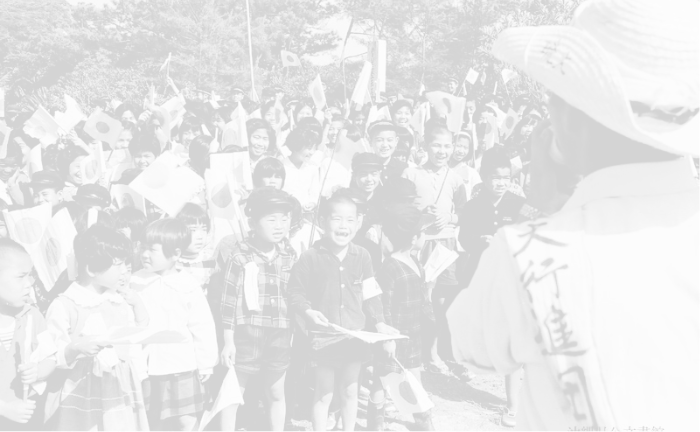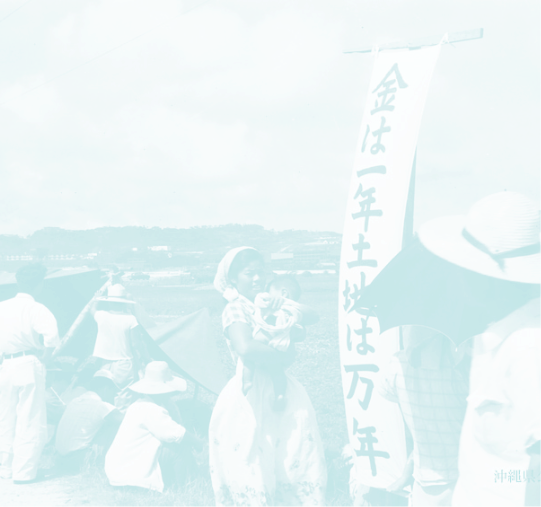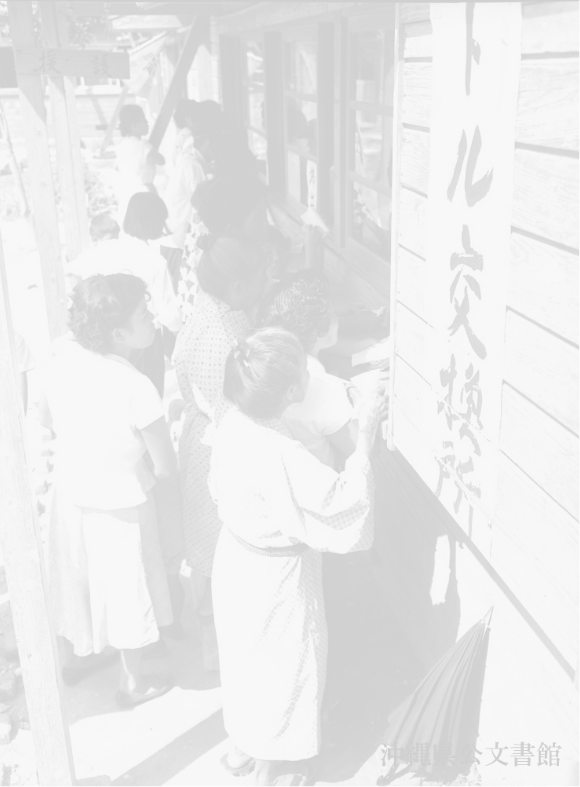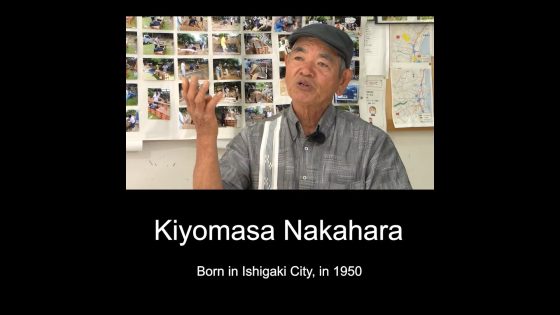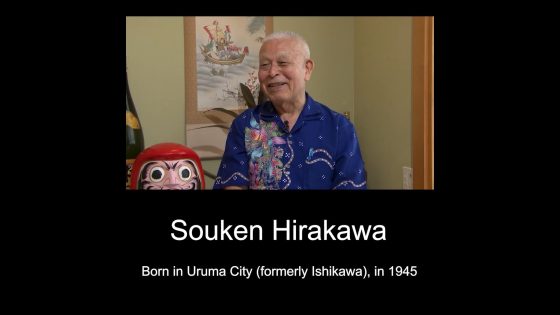
Food and Life in Koza after the War
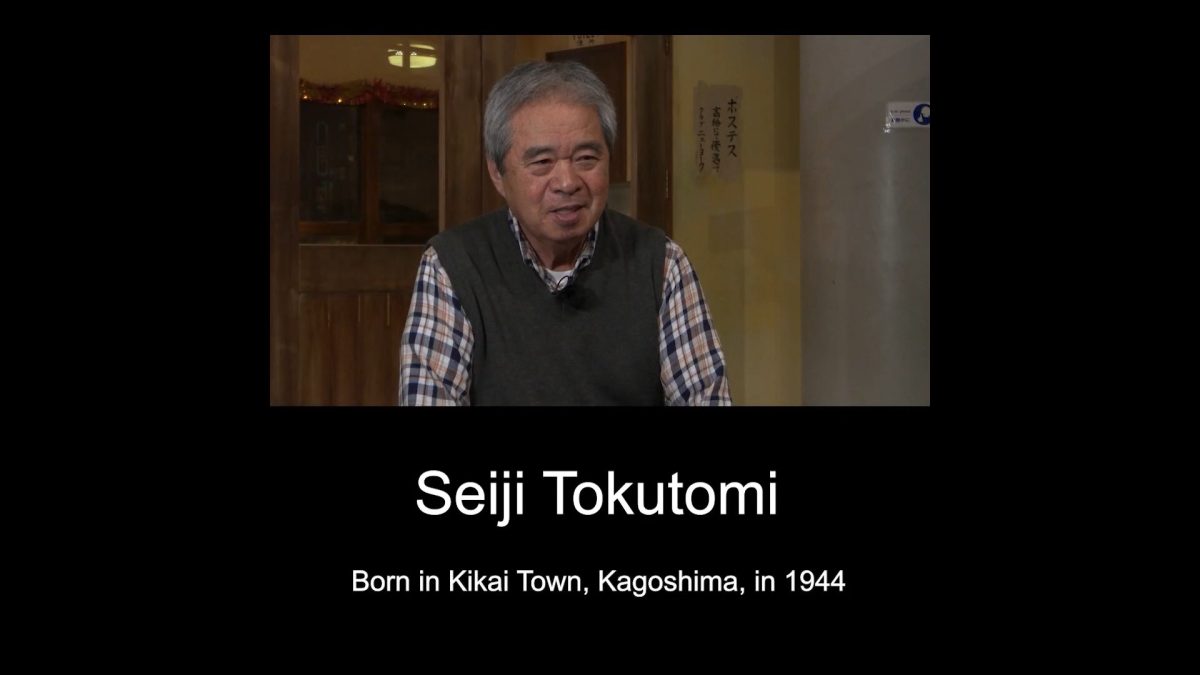

- Born in 1944
- Seiji Tokutomi
Timeline
| 1944 |
Born on Kikai Island, Kagoshima Prefecture.
|
|
|---|---|---|
| 1949 |
The mayor of Goeku Village negotiated with the U.S. military to promote the concept of a business center in a commercial district for U.S. military personnel.
|
|
| 1951 |
New York Restaurant opened in Teruya, Goeku Village (now Teruya, Okinawa City).
|
|
|
His father opened a restaurant of the same name on Center Street in Koza.
|
||
| 1953 |
The "A-SIGN" business license system was established for restaurants approved by the U.S. military.
|
|
| 1964 |
The A Lunch added to the menu at a New York restaurant.
|
|
| 1970 |
Witnessed the scene of the Koza riots.
|
|
| 1972 |
Okinawa's administrative rights were returned to Japan. (Reversion of Okinawa)
|
|
| 1972 |
Became the owner of the New York Restaurant on Center Street. (until 2008)
|
|
| 1982 |
The name of the shopping street was changed from "Center Street Shopping Street" to "Okinawa City Central Park Avenue.
|
Story
Brief biography of the witness
He first encountered American food culture at the New York Restaurant, an iconic post-war Koza institution founded by his uncle. From 1972 to 2008, he owned the restaurant of the same name on Center Street. He has continued to observe the changes in the town of Koza, including the base, the shopping district and the lives of the people who work there, the changes in U.S. military personnel over time, the A-SIGN system, and Koza's food culture.
From Kikai Island to Koza
Children's Life on the Island
I was born on Amamioshima Island, and came to Okinawa when I was in the third grade of elementary school. When I was a child, we were all very poor. It was 4 km to the school, but I walked. I left the village around 6:00 a.m. and went to school barefoot.
From Kikai Island to Koza
When we arrived at Aja Port, at that time, there was no pier, so we transferred from a large ship anchored offshore to a small boat and went ashore. By the time we landed, we were already knee-deep in seawater. We then went through the shopping district of Aja, passed through a tunnel on Route 1 [now Route 58], and took a bus from up there to Koza [now Okinawa City]. Around then, my father came to Koza before the rest of the family. My family had six children, and I came with my two younger sisters and my mother. My first impression of Koza was scary. It was a scary town because there were a lot of big American soldiers.
"New York Restaurant" at the time of its founding.
Kashitomi Motoyama Founder of the New York Restaurant
My uncle, Kashitomi Motoyama, was a gentleman. He gave children an American education, so if we didn't do what he taught us, our father would scold us. When my uncle went out into town, he dressed neatly, wore a hat and a cloak, and carried a walking stick.
At first, the main dish was sandwiches. Back then, steak was not available in large quantities, because of importers. We used ground meat for hamburgers, so we had to run the grinder and make the ground meat ourselves. So I had no problem with that.
His Father’s Restaurant and the Street Scenery
I washed the dishes, and since I bought truckloads of firewood from Yanbaru, I did the chopping. Those were my only chores. American soldiers at that time were gentlemen. After the Battle of Okinawa, American soldiers dressed neatly when walking around town, with their shirts buttoned properly and their shoes polished. There were many barbershops at that time. There were some shops where only the owner had a license. Anyway, there were a lot of barber shops. American soldiers first went to the barbershops and then went out on the town. When we reached out to them on the street, they would give us chocolate, and sometimes they would give us money. I would stand in front of the movie theater, wanting to see a movie, and they would hold my hand and take me into the movie theater with them. I went to church before Christmas. I'm not really a Christian though. I went to get chocolate and sweets. At that time, I received a lot of sweets from the Americans.
Menu from the Restaurant at the Time
Beef was relatively easy to obtain, but the meat used for steak came as carcasses. It would be nice if they came in parts like ribs and tenderloins, like they do now, but it was imported in the form of carcasses. I don't think it was that inconvenient. However, pork was difficult to obtain. Thanks to the pigs sent from Hawaii, we were able to create a lunch menu. First was the C lunch. I had to add a cutlet to the C lunch as well. I visited many butcher shops on Saturdays and Sundays. I couldn't get that much pork. Pork is now readily available. For lunch, A was created after C, and the types ranged from B to C. I think there are many people who grew up eating C lunches. I think most Okinawans in their 50s and 60shave eaten a C lunch. The people in the shopping district where the restaurant was located, Center Street, made a lot of money. I think many people grew up that way, with parents who were busy with business and told them to eat a C lunch at the New York Restaurant.
At the time, a C lunch was about 35 cents and Okinawa soba was 25 cents. It was fancy. The B lunch was about 50 cents. The A Lunch was the main choice for year-end parties when civil servants received bonuses, it was that expensive. It was about 60 or 65 cents. Steak cost about 90 cents for 300 grams at most. The other thing that was expensive was chicken. Chicken was about 80 cents. Maybe 75 cents, or 80 cents, or 70 cents. But it was expensive. Chicken was difficult for Okinawan people to get their hands on. I mean fried chicken. Fried chicken sold extremely well. It was sold as souvenirs and presents for hostesses. Okinawans who worked at places like bars that served American soldiers, for example, hostesses’ families often ate the chicken they received as a souvenir. So people in their 50s and 60s must have eaten a lot of chicken back then. The main breakfast for Americans was three eggs. A minimum of three eggs for bacon and eggs, or ham and eggs. Some of the customers wanted five or a double order, so we didn't have enough eggs.
Under the A-SIGN system
Procurement of Vegetables and A-SIGN
The military's designation was very strict. At that time, there was a place that sold vegetables called Okinawa Bussan, which was located on a hill beyond Nakagusuku Village Hall. It was a source of vegetable imports. We had an A-SIGN permit, so we had to buy vegetables there. We had to get receipts as proof. There were designated locations as procurement sources within Okinawa. Vegetables from there were allowed to be used in Nakachi in Tomigusuku. The US military had permission to grow vegetables in that area. Now that I think about it, it wasn’t easy to get fresh vegetables, even for the US military.
Types of A-SIGN
The color of the A-SIGN varied depending on the job type, and restaurants were red. I think the butchers and bakers at the grocery store were black. A-SIGN bars were blue. Of course, the important thing was the display in front of the entrance. Customers see that and enter. If they saw the A sign from the road, the American soldiers would come in. The A sign was displayed in two places: one in front of the entrance and one inside. When a surprise inspection by the US military entered even one location, they would signal to everyone that the inspector has arrived. It was especially difficult for restaurants. We had to clean up.
A-SIGN Certification and the People at the Stores
For example, a person who had obtained an A sign and was doing business had to first obtain a permit from the Ryukyu government health center. They also had to pass the 1st-rank exam. The US military health center inspected it, and if it met the standards, business was permitted as a store authorized by the US military. The US military's unannounced tests would suddenly come twice a week. We had to meet the inspection criteria. In that respect, I am glad that I was able to learn from the US about food hygiene and public health. The inspections were strict, but in the past, there was only a loose system, and we local business owners were all lazy. Under the A-sign system, that was not enough. It was tough.
American Food Culture
The origin of Western food in Okinawa is Koza, Okinawa City. Hamburgers, pizza, apple pie, tacos, and taco rice already existed in my father's time in the 1950s. However, only the people around Koza ate such foods. People in other areas didn't eat them. At that time, Americans ate those things. Steak came from New Zealand and Australia. It was imported by second-generation Okinawans from Hawaii. It was a company called Ivano Meat run by a Hawaiian. After Okinawa returned to Japan, People from Okinawa could not import directly because that company had direct contracts with major Japanese companies such as Marubeni. So the first generation of Ivano went to Hawaii.
Koza City and people's life
Koza and Center Street
There was a union in the shopping district at the time, and the union was quite active. For example, the union operated a place where Americans could exchange dollars and B yen [US military currency]. At that time, Okinawans were not allowed to carry dollars. My father was at the store, accepting dollars from American soldiers when they didn't have B yen. He hid the dollars so they wouldn't be found.
Why was Koza Center Street created? There was a reason why such a shopping street was necessary. There used to be a bar district called Yaeshima behind the Okinawa Civic Center, which was about 300 meters long and was extremely popular. It was closed to motor traffic every night. There was more than just bars there. There were other businesses as well. When the US congressmen came, they decided that these kinds of businesses were not allowed, and declared the whole area off-limits. So, they had to decide where to create a place for the American soldiers to enjoy themselves. Since the entire area around what is now Center Street and Gate Street was a military base, the village chief at the time requested that that area be liberated. We were asked by the US military what we would do with the land, so we decided to build a business center, including a movie theater and a roller skating rink and souvenir shop. We created a place like that. That was the beginning of Center Street. After that, the people who ran bars that catered to foreigners on Yaeshima moved to Center Street, Gate Street and Naminoue in Naha.
At the time, there were no tailors on Center Street yet. There was a tailor for African-Americans in Teruya. South of Futenma and Isa in Ginowan, people of Taiwanese and Hong Kong descent worked as tailors. They were for Caucasians and rich Okinawans. There were Taiwanese and Okinawan seamstresses. They were very busy and had to finish quickly. Suits were completed in 3 to 4 days. The African-American town was originally located in Shiromae, but it moved to Teruya. The reason why it moved to Teruya was because Center Street was built. Caucasians moved from Teruya to Center Street. Then African-Americans moved in. Bars and tailors opened. And there were so many barbers. If you watch old American movies, men immediately go to the barber. Even in Western movies, when men get back from the mountains, men immediately go to the barber shop or take a bath. I guess Americans had a custom of cleaning themselves when they go out.
Back then, watches and cameras explosively. American soldiers who had money bought nice things made in Japan, and Omega and Rolex watches. During the Vietnam War, when American soldiers ran out of money during the limited period before being dispatched, they would pawn all their belongings. That's why many pawn shops were opened.
Base Towns and People's Lives
In places like Nanmin, Futenma, Koza in Okinawa City, and Kadena [towns where there were US military bases], thanks to those people everyone could make money and earn a living. I was able to educate my child and make him a full-fledged adult. After all, it was because of the presence of American soldiers, for the people in base towns. Even people from Naha came to Koza. Wholesalers in Naha used to spend a lot of money in Koza. We in Koza went to the public markets and wholesalers in Naha and bought things that weren't available in stores in Koza. So a lot of dollars were spent on the streets of Koza. We used that money to shop in Naha, and Naha also benefited from it. That's why American products are still preferred in Koza. Things like Eggo mayonnaise, and Heinz ketchup, and Colgate toothpaste. Such products are still sold in Koza. In Koza, people didn’t mind products made in the US.
Center Street in the 1960s
When I graduated from high school in 1963, the monthly salary for national civil servants and prefectural employees was less than $35. For military employees, it was at least $40, maybe about $45. So a $10 difference, and that difference was huge. We could eat Okinawa soba for 25 cents. If you were invited to a wedding reception held at a community centers, you’d bring a gift of $3. That $10 difference was huge back then. Therefore, very few people wanted to work in government offices. At my father's restaurant, you could eat a 300 g steak for $1 and still have change left over. At its peak, he made $2,000 in one night. The owner of a big A-SIGN bar could apparently make about $5,000. At that time, Okinawans could build a house for as little as $3,000. Look at the old Center Street neon lights. The neon lights were amazing, similar to Ginza in Tokyo. The shops on the street competed with neon lights. People outside the street saw how prosperous Center Street was. Stores were so profitable that there were rumors that they couldn’t fit all their money in safes, and had to put in oil drums. Of course they couldn’t fit it into the cash register. That could vary from 1 dollar to large amounts of money. It was true that there wasn't enough space for money in the cash registers, but the story about oil drums was an exaggeration, though some stores did earn that kind of money.
Impact of the Vietnam War
The Vietnam War and Changes in the City
After the Battle of Okinawa ended, there were very kind American soldiers and it was relatively easy to do business. But when the Vietnam War began in the 1960s, the situation around American soldiers changed dramatically. I felt like they had become barbarians. I thought, war drives people crazy. At the beginning, at stores on Center Street that catered to foreigners, everyone enjoyed ballroom dancing. They’d dress nicely, go to a bar, turn on the jukebox, and dance. When we saw that, I think we Okinawans wanted to do the same. Many dance halls opened in Koza. At night the foreigners, both women and men, would go to dance halls and dance, and then go to bars. We Okinawans also imitated the way foreigners would drink. We played songs on the jukebox, danced, and drank. I think even today, Okinawans over 70 are very good at ballroom dancing, regardless of gender. Because if men couldn't dance, they wouldn't be able to attract women.
After that era, the Vietnam War began in the 1960s. American soldiers spent a lot of money in Okinawa. All the towns with bases were like that, including Namiue in Naha. Many people came to Center Street in particular. It was so crowded. There were many incidents, so the MPs [US military police] would patrol in pairs. This is because there were a lot of fights and troubles. The music in the city changed from jukeboxes to live music. When Okinawa City was a small town, there were many jazz songs and performances. After jazz became popular, naked women dancing became popular. I kind of feel sorry for them. Many dancers came from Tokyo and Osaka. At that time, people needed a passport to come to Okinawa, so these dancers could only stay in Okinawa for three months. There were productions dedicated to those dancers in Naminoue. At the time, some foreigners [American soldiers] acted strange. They were doing drugs, all sorts of things. Once that period ended, next came rock music performances. The next change was when Filipino women started coming as dancers, and after that, Filipino bands started coming. And so, gradually, the appearance of the street changed.
Seeing off US Soldiers Deployed to Vietnam
I saw three people leaving Kadena Air Base for the Vietnam War. My father's restaurant opened at 8:00 a. m. Every day, as soon as it opened, it was immediately filled with customers. The restaurant serving American soldiers had a counter bar inside. There, people could eat at the counter where you’d usually order alcoholic drinks, starting in the morning. They also came every day. Me, my dad, the waitress and all the others went to see them off when they went to Vietnam. Three of them or so went to Vietnam. I don't know what happened to those people after that. I felt bad for them. When they came to the restaurant, they were so happy, and lively, spending money generously, and seemed to be having a lot of fun. When they went to Vietnam, they got so depressed and sad. I didn't want to see them like that again. The soldiers I saw off were in their twenties, like me. War is no good, and racial discrimination is no good. War is something we absolutely mustn’t do. It's terrible. War destroys humans. Even decent people will kill people in war. You can't kill someone in a normal state.
Koza Riot and Incidents and Accidents Caused by US Soldiers
Koza Riot (1970) and Incidents and Accidents Caused by US Soldiers
The crowds would shout, “Burn it! Burn it!” Even though I wanted to get out of the car, I couldn't make it in time because there was such a huge crowd. Because there was no leader. The Koza riots ended quickly. Otherwise, there might have been more damage. A police officer was riding in the back of an MP car patrolling the city. The Okinawan police officers couldn't speak English. So even if there was an incident, all they had to do was come to the scene. The MPs handled everything. That's why all cases were handled the American way. When there was a small incident in our shopping district, the police officers asked the hostess, who spoke English, “What are the Americans saying?” It was like that back then. Okinawan police had no authority whatsoever. Nobody liked the situation. Maybe a foreigner was doing something bad, but the police officers also didn't understand English. We didn't understand English that well either. I felt very angry that even though I thought the incident was bad, there was nothing I could do about it.
Strike before Okinawa’s Return to Japan
Before Okinawa’s return to Japan, the garrison forces union and the union of Okinawan Teachers Association bus drivers frequently went on strike. Schools were closed when the bus drivers and teachers went on strike. The garrison forces union also frequently went on strike if there were layoffs. If that happened, American soldiers wouldn't come into town. Then we wouldn't be able to do business. What happened was, I became active because I felt that something had to be done about the garrison forces union. In the shopping district, stores closed at 12:00 midnight, and one person was collected from each store. We gathered inside the movie theater, and there was someone there to guide us, Saying, “We have to fight against the garrison forces union.” “We have to defeat them and get foreigners out on the streets. “So, the question was, how do we fight against the garrison forces union? When I went to what is now the Okinawa City Athletics Stadium, I think there were about 50 people there. There, we practiced how to fight against the garrison forces union. We didn't know if we would actually fight like that, but we had to practice anyway. The young members of the union also did something like that because it was something they had to do, so they did. I did something like that before Okinawa was returned to Japan.
Message to Younger Generations
First of all, we should never go to war. I didn't want to see the joy on American soldiers' faces when they returned from warn or sadness on their faces when they left the stores due to dispatch. That's why we should never go to war. I want to say that strongly. Also, many people die in wars. Since then, the Okinawan people have faced many hardships. We ran a restaurant. Thanks to Americans, Okinawa's food culture has changed considerably. Whether it's good or bad, I believe that the influence of American culture has enriched the Okinawan people's lives in many ways. There was the high commissioner, and as a result, the people of Okinawa had a lot of bad feelings. But they also did some good things. For example, they paved roads, built bridges, and did a lot of other things, but those things don’t really draw much attention.
